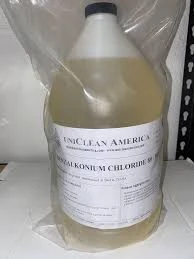polyhydric alcohol phosphate ester
Polyhydric Alcohol Phosphate Esters Properties, Applications, and Future Perspectives
Polyhydric alcohol phosphate esters are a significant class of compounds that combine the properties of polyols and phosphoric acid esters. These compounds are characterized by the presence of multiple hydroxyl groups in their structure, which facilitate a diverse range of applications across various industries. As a consequence of their unique chemical properties, polyhydric alcohol phosphate esters are increasingly important in fields such as food technology, pharmaceuticals, cosmetics, and materials science.
Chemical Structure and Properties
Polyhydric alcohol phosphate esters typically consist of a polyhydric alcohol backbone—like glycerol, sorbitol, or mannitol—modified with phosphate groups. The presence of these phosphate groups imparts amphiphilic characteristics to the molecule, meaning that they possess both hydrophilic (water-attracting) and hydrophobic (water-repelling) qualities. This dual nature enables polyhydric alcohol phosphate esters to function effectively as emulsifiers, surfactants, and stabilizers in formulations.
Moreover, the multifunctionality of polyhydric alcohols contributes to the physicochemical properties of these phosphate esters. For instance, the number of hydroxyl groups influences the solubility, viscosity, and thermal stability of the compound. These properties make them versatile reagents and additives in various applications.
Applications in Various Industries
1. Food Industry In the food sector, polyhydric alcohol phosphate esters are often used as emulsifying agents and stabilizers. They can improve the texture and mouthfeel of food products, enhancing consumer acceptance. Moreover, their ability to solubilize flavors and nutrients makes them valuable in functional food formulations. Given their generally recognized as safe (GRAS) status, they possess great market potential for use in diverse food applications.
polyhydric alcohol phosphate ester

2. Pharmaceuticals In the pharmaceutical industry, these compounds serve as excipients that enhance the solubility and bioavailability of active pharmaceutical ingredients (APIs). Polyhydric alcohol phosphate esters are used in the formulation of oral, topical, and injectable drug products. Their ability to stabilize emulsions and form complex structures helps in the controlled release of drugs, leading to improved therapeutic outcomes.
3. Cosmetics and Personal Care Polyhydric alcohol phosphate esters are popular in cosmetic formulations due to their excellent emulsifying and skin-conditioning properties. They contribute to the stability and texture of creams, lotions, and serums, ensuring a desirable feel and application. Their non-irritating nature and compatibility with various skin types make them suitable for a wide range of personal care products.
4. Materials Science In materials science, these compounds are increasingly used as additives in the production of polymers and coatings. They enhance the mechanical properties of materials and improve their resistance to environmental factors. Their application in biocompatible materials is also being explored, particularly in the development of drug delivery systems and tissue engineering scaffolds.
Future Perspectives
As the demand for eco-friendly and sustainable products rises, polyhydric alcohol phosphate esters are likely to gain increased attention in various sectors. Research is being focused on developing bio-based alternatives derived from renewable resources, which would enhance their appeal from an environmental perspective.
Furthermore, advancements in chemistry may lead to the design of new polyhydric alcohol phosphate esters with tailored properties for specific applications. Innovations in polymeric modifications could also improve the performance of these compounds across different formulations.
In conclusion, polyhydric alcohol phosphate esters represent a fascinating and versatile class of compounds with multiple applications in diverse fields. Their unique chemical properties allow them to serve critical functions in enhancing the performance of products, making them invaluable to industries ranging from food and pharmaceuticals to cosmetics and materials science. With ongoing research and a growing trend towards sustainability, the future of polyhydric alcohol phosphate esters appears promising, leading to even broader applications and innovative solutions. As these compounds continue to evolve, their role in improving everyday products and processes will undoubtedly expand, marking them as crucial players in the advancement of modern technology and consumer goods.
-
LK-319 Special Scale And Corrosion Inhibitor For Steel Plants: Advanced Solutions for Industrial Water SystemsNewsAug.22,2025
-
Flocculant Water Treatment: Essential Chemical Solutions for Purification ProcessesNewsAug.22,2025
-
Isothiazolinones: Versatile Microbial Control Agents for Industrial and Consumer ApplicationsNewsAug.22,2025
-
Scale Inhibitor: Key Solutions for Water System Scale PreventionNewsAug.22,2025
-
Organophosphonates: Versatile Scale Inhibitors for Industrial Water SystemsNewsAug.22,2025
-
Scale and Corrosion Inhibitor: Essential Chemical Solutions for Water System MaintenanceNewsAug.22,2025





